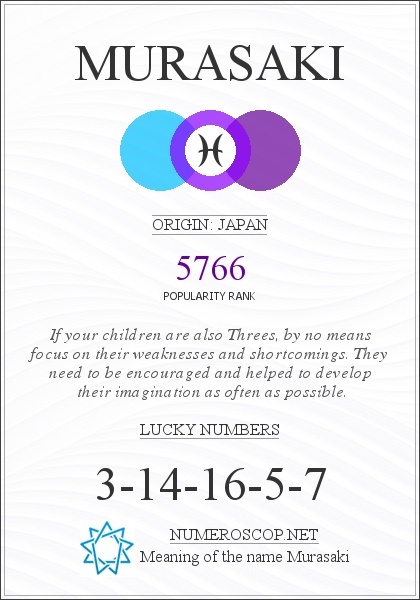

Although demoted to commoner status (and forced to take the name of Minamoto), Genji rises in rank to the position of Honorary Retired Emperor and lives to see his children becoming Emperor, Empress and Minister, respectively.

In the tale, Genji occupies center stage from chapters one to forty-one and the narrative focuses on his amorous exploits and political successes. Independently of Murasaki Shikibu's sources of inspiration, Hikaru Genji cannot be simply reduced to being a mere fictional reflection of a real historical figure. Some of the favorite candidates are Ariwara no Narihira (the hero of The Tales of Ise), Emperor Murakami, Sugawara no Michizane, Minamoto no Tōru or Fujiwara no Korechika. Many scholars have tried to decipher the real or fictional model behind the character of Genji.

Murasaki Shikibu is no exception: "Murasaki" means "purple" and is likely derived from her character of the same name or her clan background, which used the wisteria as its flower, while “Shikibu” refers to a court position in the Bureau of Ceremonies ( shikibu) that her father used to occupy.įollowing Genji, all the other characters are introduced following the chronology of the events in the tale. Similarly, many women writers of the Heian period left behind their sobriquets alone. Genji, Murasaki, Akashi, Utsusemi, etc.), whereas Tyler’s, a more textually accurate translation, tends to change sometimes characters’ appellation with every chapter. Out of the two most recent translations into English, Seidensticker’s tends to systematically employ the same names (e.g. Lady Rokujō, whose mansion is on the Sixth Avenue, rokujō, or Fujitsubo, literally wisteria pavilion, the part of the Imperial Palace where this particular lady resided). Lady Akashi who lived on the Akashi coast before meeting Genji), or from the name of their residence (e.g. Murasaki takes her name from a poem by Genji), from the particular court positions they occupy (in the Tyler translation, characters are often referred to by such terms as His Highness of War, Her Majesty the Empress, His Grace, the Palace Minister and so on), from their geographical location (e.g. Instead they are assigned sobriquets derived from poetic exchanges (e.g.

The characters of The Tale of Genji do not possess birth names. The Third Princess, a character from The Tale of Genji (ukiyo-e by Suzuki Harunobu, ca.


 0 kommentar(er)
0 kommentar(er)
